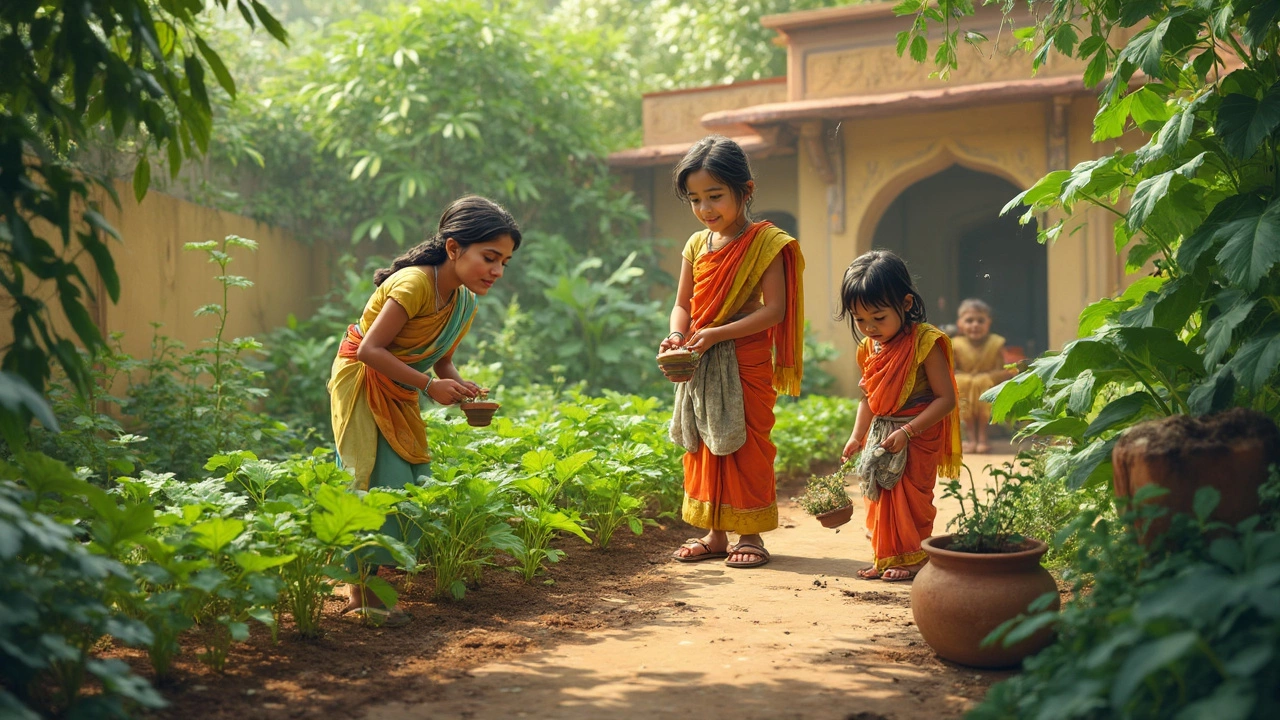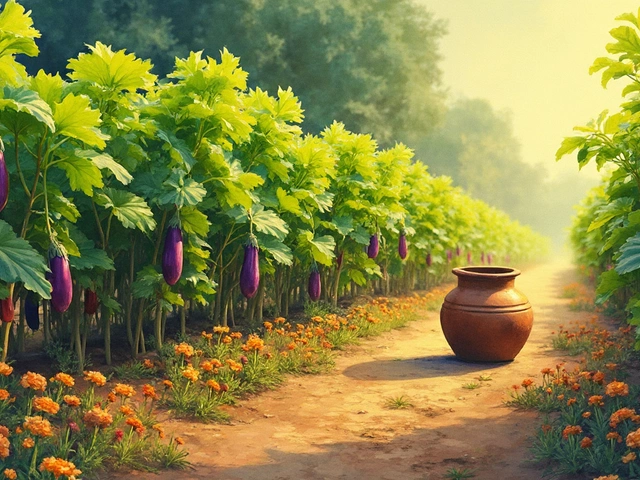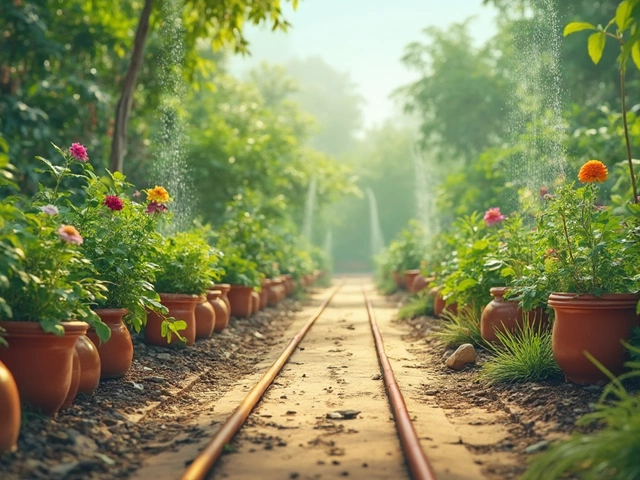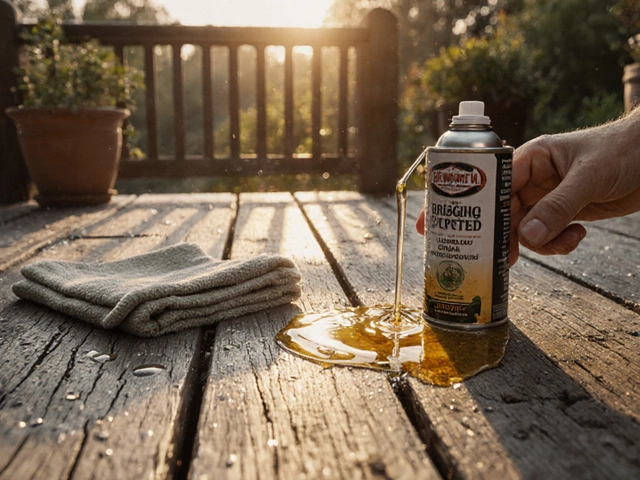If you care about growing food that’s good for you and good for the planet, you might wonder—what’s the best veggie for the job? It’s not just about what’s easy or tasty. Sustainability is about how much water, space, and effort a vegetable needs, plus how much it gives back.
A lot of folks think tomatoes or lettuce are the top choices. But if you look closer, not all veggies are created equal when it comes to eco-friendly impacts. Water use, pest resistance, how fast they grow, and whether you can plant them more than once a season—all this stuff matters.
Ready to dig into which vegetables pull their weight in the garden without draining resources? Skip the guesswork. You want crops that thrive with minimal fuss, save on water bills, and don’t need a ton of fertilizer. Turns out, you might be surprised by which one stands out. Keep reading, and you’ll see what really sets the most sustainable option apart.
- Why Sustainability in Veggie Growing Matters
- What Makes a Vegetable Truly Sustainable?
- Top Contenders: Comparing Common Garden Crops
- The Surprising Winner (And Why)
- Tips for Growing the Most Sustainable Veggies
- Going Beyond: Other Ways to Green Your Garden
Why Sustainability in Veggie Growing Matters
When you pick what to grow, you’re not just choosing what ends up on your plate. You’re also making a call on water use, soil health, and even local wildlife. Veggies that guzzle water or attract pests needing chemical sprays don’t just hurt your wallet—they push your garden in the wrong direction.
Think about this: the average home gardener can use up to 50% of household water outdoors, and a big chunk goes to the veggie patch. Water-saving crops take a lot of pressure off the tap, which is huge in places that deal with summer droughts year after year. If a vegetable is tough against bugs and diseases, you also skip most of the harsh stuff that can leach into soil and water.
It’s not just what you grow, but how. Picking the sustainable vegetable cuts down on the resources you need for every salad or stew. That means less strain on nature, less money out of your pocket, and more reliable food—especially if you live somewhere hit by food supply problems.
| Vegetable | Average Water Use (Liters/Kg) | Average Emissions (Kg CO2/Kg) |
|---|---|---|
| Lettuce | 237 | 0.2 |
| Carrots | 195 | 0.16 |
| Potatoes | 134 | 0.27 |
| Beans | 50 | 0.12 |
Caring about sustainability isn’t just about feeling good. It’s about lower bills, easier gardening, and helping the planet without leaving your backyard. Every plant and every choice can nudge your home closer to a lighter footprint.
What Makes a Vegetable Truly Sustainable?
People toss around the word “sustainable,” but when it comes to veggies, what does that actually mean? The most sustainable vegetables use fewer resources—like water, fertilizer, and space—while giving you a solid yield. They're tough enough to handle pests and don’t need much pampering. If you’re growing food at home, this adds up to less work for you and less stress on the environment.
So, what should you really look for? Here’s what makes a vegetable stand out in the sustainable vegetables category:
- Water use: Some crops gulp water, while others are chill with just a drink here and there. If you live somewhere dry or just want a garden that’s easy on your water bill, veggies with low water needs are the way to go.
- Soil impact: Certain vegetables feed the soil or at least don’t strip it bare. Beans and peas, for instance, add nitrogen back into the earth, helping your next round of crops do better.
- Pest & disease resistance: If a plant shrugs off bugs and fungus, you won’t have to douse your garden in chemicals. Less spraying is better for you, your pets, and your backyard ecosystem (trust me, my dog Max always finds the leftovers).
- Growth rate & yield: Fast-growing veggies that keep producing are the real MVPs. Radishes, for example, give you food in a month, so you get more harvests over the season.
- Local adaptability: Plants that do well where you live—without greenhouses or constant babying—skip the carbon footprint of transport and extra energy use.
Here’s a quick look at some key factors for comparison:
| Factor | Why It Matters | Examples |
|---|---|---|
| Low Water Use | Saves water, great for drought areas | Kale, beans |
| Soil Nutrition | Keeps or improves soil for future seasons | Peas, clover |
| Pest Resistance | Lowers need for pesticides | Swiss chard, onions |
| Multiple Harvests | More food, less effort | Spinach, chard |
It boils down to choosing veggies that play nice with nature and don’t hog resources. Not every crop on the seed rack fits the bill, so thinking about these factors helps you make choices that last. Next time you’re picking seeds, check those labels and maybe skip the high-maintenance stuff. Your garden—and the planet—will thank you.
Top Contenders: Comparing Common Garden Crops
When we talk about sustainability, some veggies just can’t keep up. Let’s size up the usual suspects to see which ones are truly pulling their weight and which are more resource-hungry than people think.
Sustainable vegetables like kale, beans, carrots, squash, and lettuce show up in home gardens everywhere. But which one really scores best for eco-friendly growing? Here’s a breakdown of how a few stack up when you look at water needs, growth speed, pest resistance, and how much they actually feed you.
- Kale: Not only tough as nails, but you can pick the leaves as you go, letting the plant keep giving. It doesn’t guzzle much water and holds strong against pests without much fuss.
- Green Beans: These guys fix nitrogen in the soil, which means they feed themselves and help other plants nearby. They’re quick to grow and, bonus, they pump out lots of pods in even small garden spaces.
- Carrots: Root crops like carrots don’t need a lot of room up top, but they do draw water deeper in the soil. They stretch a long way for the effort, but some soils need more prep to get solid yields.
- Zucchini (Summer Squash): Zucchini is famous for its wild productivity. One or two plants can turn out a serious haul. They need a bit of space but rarely get hit hard by bugs or disease.
- Lettuce: Lettuce is fast but often needs lots of water, especially in hot weather. You can get plenty out of a small plot if you keep it moist, but it wilts in drought or heat.
Check out this quick comparison on key sustainability features:
| Vegetable | Water Usage | Pest Resistance | Yield per Plant | Season Length |
|---|---|---|---|---|
| Kale | Low | High | Medium/High | Long (pick and come again) |
| Green Beans | Low/Medium | Medium | High | Medium |
| Carrots | Low | High | Medium | Medium |
| Zucchini | Medium | High | High | Medium/Long |
| Lettuce | High | Low/Medium | Medium | Short |
The big takeaway? Crops that can handle pests, require less water, and keep producing make a real difference for anyone focused on sustainability. Sure, some vegetables are popular, but not all are as low-impact as you’d think.
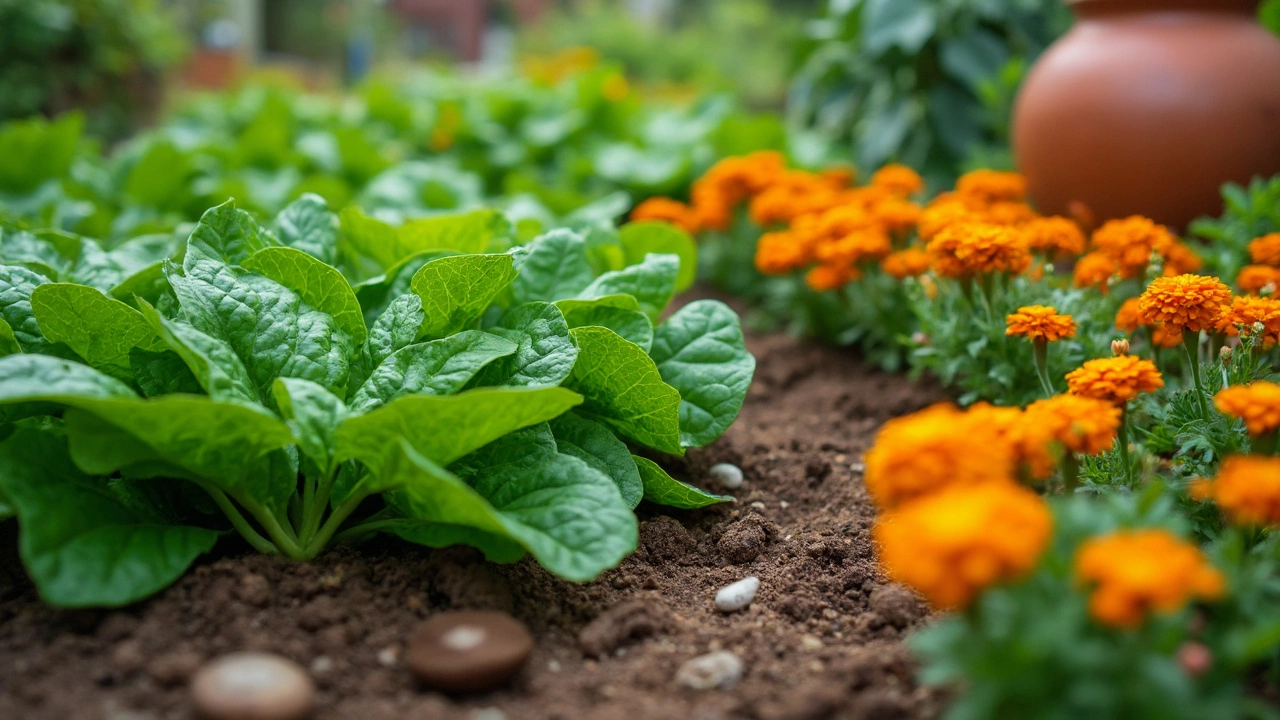
The Surprising Winner (And Why)
Okay, here’s the big surprise: out of all the veggies you could plant, beans (especially bush beans) take the trophy for being the most sustainable vegetable to grow. It’s not just gardening hype, either—there are some pretty solid facts behind this.
First off, beans aren’t picky. They don’t need rich, fancy soil or constant extra watering. In fact, they’re known to improve the soil all on their own by fixing nitrogen, which means they actually add nutrients back into the dirt instead of just sucking them out. This is a huge deal if you want to keep your backyard soil healthy year after year.
Let’s check the numbers real quick. Compared to water-hungry crops like lettuce or tomatoes, beans can get by with less, especially in areas that don’t get tons of rain. They bounce back fast after drought, and most garden pests barely bother them. You don’t have to drown them in chemicals, so you’re keeping things more natural all around.
Check this out if you like real figures:
| Veggie | Gallons of Water per Pound |
|---|---|
| Beans (bush/dry) | 80-100 |
| Lettuce | 160 |
| Tomatoes | 120 |
| Carrots | 108 |
That chart spells it out—beans win on water savings. And here’s the kicker: you can eat both the pods (when young) and the dry beans, which means way less food waste. Plus, beans are packed with protein, making them a filling part of your meals when other homegrown veggies might leave you hungry.
On top of all that, beans are easy to grow in small spaces, even pots. They grow fast, so you can fit more cycles into a single summer if you plan it right. Whether you’re all about cutting your water bills, keeping your soil healthy, or just wanting a steady, low-impact harvest—beans have you covered.
Tips for Growing the Most Sustainable Veggies
You want your garden to be as kind to the earth as possible, right? Here’s what actually works when you want to grow vegetables that use less water, need fewer chemicals, and leave the soil better than you found it.
- Pick the right crops for your climate. Beans, kale, and zucchini handle heat and dry times better than thirsty crops like celery or cauliflower. If you live where summers get scorching and water is tight, pick tough veggies that don’t mind.
- Grow from seed, not starts. Starting from seed uses less plastic, less shipping, and honestly, you'll be surprised at how strong your plants are when they haven't spent time in a store tray.
- Use compost—not synthetic fertilizer. Compost builds up your soil’s health, cuts down on waste, and means less runoff harm to rivers and lakes. If you’ve got food scraps, you’ve got future plant food.
- Mulch smart. A thick layer of leaves, straw, or even grass clippings locks in soil moisture, keeps weeds down, and feeds your soil as it breaks down. Less weeding, less watering. Win-win.
- Rotate what you plant each year. Don’t put beans in the same patch every season or diseases and pests will camp out. Mix things up and your soil stays richer for longer.
- Water early in the day, and only when plants actually need it. Most veggies don’t want soggy roots. Stick your finger in the dirt—if it feels dry two inches down, it’s time to water. Otherwise, skip it. Saves water, keeps plants hardy.
When looking at sustainable vegetables, root veggies like carrots and radishes have a smaller impact because you harvest quickly, often in just a couple months. Leafy greens like Swiss chard regrow after cutting—you get more food from each plant. Beans (especially bush types) fix their own nitrogen in the soil, so they build up your garden, too.
| Veggie | Average Water Use (Liters/kg) | Pest Resistance | Yield per m2 |
|---|---|---|---|
| Beans | 300 | High | 2.5kg |
| Radish | 200 | High | 2kg |
| Lettuce | 250 | Medium | 1.2kg |
| Tomato | 400 | Low | 1.5kg |
One last tip: Save seeds at the end of the season. Heirloom varieties can handle local weather better and build up your strongest, most adaptable plants year after year. Free seeds, less waste, and more control over your garden. Pretty hard to beat.
Going Beyond: Other Ways to Green Your Garden
Just picking the right veggie isn’t the end of the road. If you wanna make your garden really eco-friendly, there’s a bunch of simple things you can do that make a big difference for the planet. Let’s talk about steps that are easy, affordable, and actually work in real life.
First, ditch chemical fertilizers and go for compost. Kitchen scraps, leaves, even grass clippings—toss them into a pile and let them break down. The result? Rich soil and less waste heading to the landfill. Compost can boost your garden’s soil health so you’ll rely less on store-bought stuff.
Next up: saving water. Drip irrigation uses way less water than sprinklers, and your plants get just what they need, right at their roots. Mulching helps too. Throwing a layer of straw, wood chips, or leaves on top of soil stops water from evaporating so fast. My dog Max loves to nap in the shade of the mulch piles—it’s a win-win.
Don’t forget about pollinator power. Bees, butterflies, and even some beetles help veggies grow. Add a row of wildflowers or sunflowers along the edge of your veggie patch. They pull in helpful bugs and just make the place look nicer.
If you want to see a quick breakdown of common water uses for some popular crops, here’s a handy chart I’ve used when picking what to plant:
| Vegetable | Water Use Per Season (Gallons/Sq Ft) |
|---|---|
| Lettuce | 12 |
| Tomato | 22 |
| Carrot | 15 |
| Beans | 10 |
It’s worth adding a rain barrel. Just hook it to a downspout, and you’ll collect free water for all your outdoor needs. Plus, if you want to *up* your game, rotate your crops each year. Different plants pull different nutrients, so rotation helps balance the soil and cuts down on pests without extra chemicals.
If you care about sustainable vegetables, don’t overlook native plants. They’re built for your climate, need less care, and support local wildlife. Mix them in with your usual veggies, and you’ll have less work and more good bugs hanging around.
Small steps add up. Just one change at a time can turn your backyard patch into something that benefits both you and your environment.
